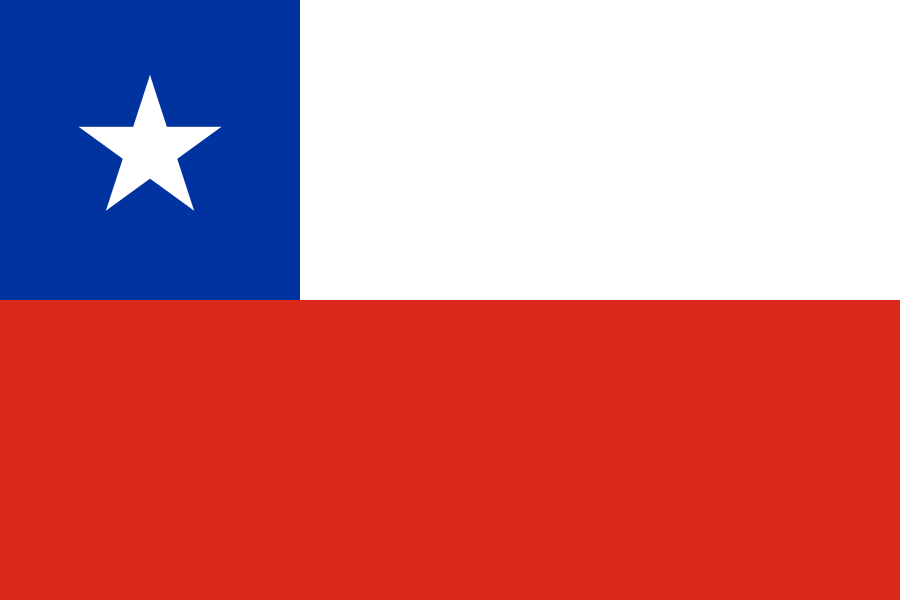The Chile flag features three primary colors: Blue, Red, White. The table below showcases the common and popular codes for these colors in HEX, RGB, and CMYK formats, along with Pantone (PMS), RAL, and NCS (Natural Color System) references. Remember, HEX and RGB codes are ideal for digital projects and web design (including HTML and CSS), while CMYK values are tailored for printing purposes.
The flag of Chile, known as "La Estrella Solitaria" (The Lone Star), is a distinctive and symbolic emblem that reflects the nation's history, ideals, and geographical features. Its design is simple yet profound, with each element carrying significant meaning.
Design and Elements:
Background:
- Colors: The flag consists of two horizontal bands and a blue square with a white star.
- Proportions: The flag's width-to-length ratio is 2:3.
Horizontal Bands:
- Top Band: White.
- Bottom Band: Red.
Blue Square and Star:
- Position: The blue square is located in the upper hoist-side corner (top left).
- Design: The square contains a single white five-pointed star.
Symbolism:
White Band:
- Representation: The white color symbolizes the snow-covered Andes Mountains, which form a natural border and a significant geographical feature of Chile. It also represents the purity and the desire for peace among the Chilean people.
Red Band:
- Representation: The red color stands for the bloodshed and sacrifices made by those who fought for Chile's independence from Spanish rule. It signifies the bravery and valor of the nation's heroes.
Blue Square:
- Representation: The blue color represents the sky and the Pacific Ocean, highlighting Chile's extensive coastline and its maritime heritage. It symbolizes the nation's aspirations and the vastness of the Chilean territory.
White Star:
- Representation: The lone white star represents a guide to progress and honor. It symbolizes the unity of the Chilean people and the country's path towards development and prosperity.
Historical Context:
The current flag of Chile was officially adopted on October 18, 1817, during the Chilean War of Independence from Spain. The design was influenced by the earlier flag used during the struggle for independence and the desire to create a national symbol that reflected the country's natural beauty, resilience, and aspirations. The star was added to emphasize unity and progress.
Overall Significance:
The flag of Chile is a powerful symbol of national identity, unity, and pride. Its colors and design elements reflect the country's natural landscape, the sacrifices of its people, and their aspirations for a peaceful and prosperous future.
The flag serves as a unifying emblem for Chileans, representing their shared history and values. It is prominently displayed during national celebrations, official events, and international gatherings, symbolizing Chile’s sovereignty and its place in the global community.
